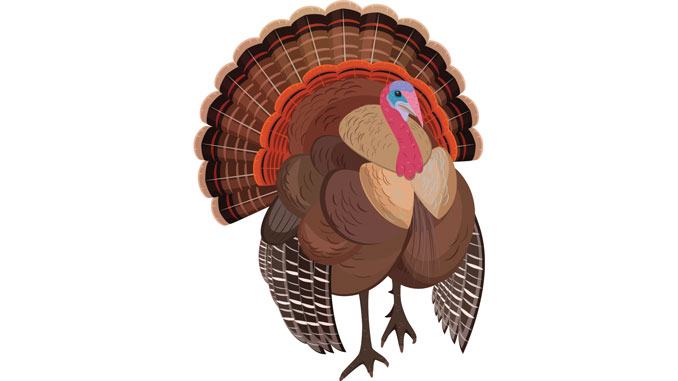
It’s that time of year again – turkey time! Here’s a little turkey 101 for anyone who wants to know more about what America’s favorite holiday bird is like before it’s rubbed in butter and cooked to perfection.
Head
Although a turkey’s head is usually red, white or blue, it turns a deep red when distressed.
Eyes
The placement of a turkey’s eyes on each side of its head gives it the ability to see two objects at once. Turkeys have sharp eyesight during the day, but their nighttime vision is poor.
Beard
All male turkeys grow beards. Turkey beards often measure up to 9 inches long, and sometimes even longer. A longer beard usually indicates an older bird.
Gizzard
Turkeys have two stomachs, one of which is called the “gizzard”. Small stones are stored in the gizzard, aiding in breaking down food during digestion.
Wings
Turkey wings are considered white meat, and the top part of the wing is called a “drumette”. At dusk, wild turkeys use their wings to fly up into trees to roost.
Legs
Turkey legs are considered dark meat, and contain around 28 grams of protein per leg. A wild turkey can run up to 25 mph.
Spurs
Both male, and female turkeys are born with spurs, but only the male’s continue to grow and sharpen as the bird ages. This helps an older Turkey establish dominance over a younger bird during mating season.
Tail
Male turkeys puff themselves up, and fan out their impressive iridescent tail feathers to get a hen’s attention during mating season.
Turkey Facts:
- A female turkey is called a “Hen”, and a male turkey is called a “Tom”. A young male turkey is called a “Jake”, and a baby turkey is called a “Poult.”
- Only male turkeys make the signature turkey gobble sound.
- Americans cook over 45 million Turkeys on Thanksgiving Day alone.

